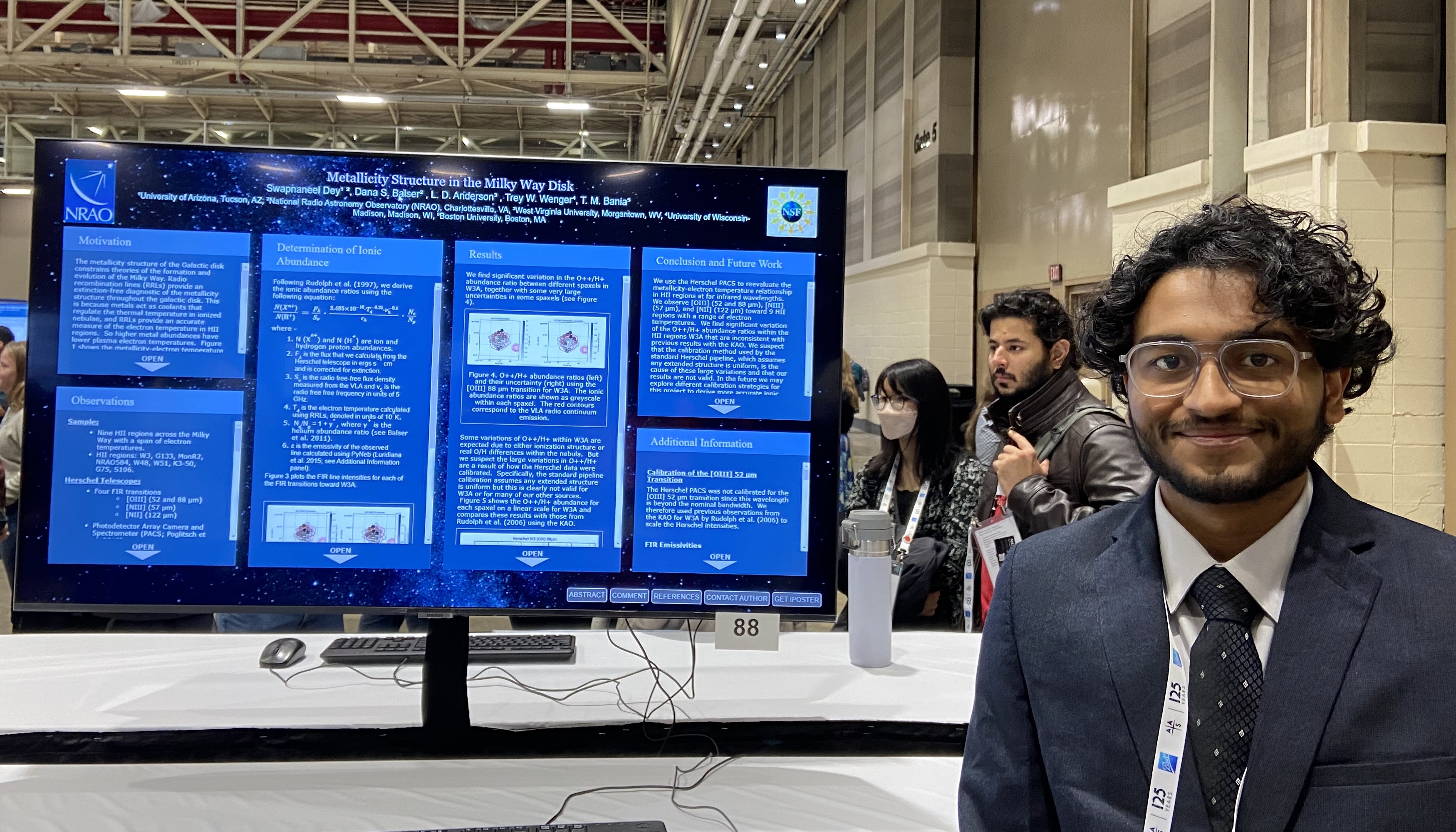In astronomy, “metals” refers to all the elements on the periodic table other than hydrogen and helium. That’s because the lightest two elements were formed in the earliest moments of the Big Bang and make up the vast majority of atomic matter in the cosmos. Other elements such as carbon, oxygen, iron, and gold were formed in astrophysical processes such as stellar fusion, supernovae, and colliding neutron stars. Because of this, the distribution of metals in the Milky Way tells us a lot about the history of our galaxy.
Unfortunately, measuring the metallicity of the Milky Way is challenging because metals can absorb light. So when University of Arizona student Swapnaneel Dey wanted to measure galactic metallicity he used a method known as Radio Recombination Lines (RRLs). This technique gives a good measure of the temperature of free electrons in clouds of interstellar hydrogen. Since metals are heavier than hydrogen, their presence tends to cool electrons down, so there is a relation between electron temperature and the amount of metals in a cloud.

Swapnaneel used data from the Herschel space telescope and the Very Large Array (VLA) to measure the metallicity of hydrogen clouds in the Milky Way, in particular the ratio of oxygen to hydrogen. What he found was that the variation in this ratio was quite large. So large that it would seem to disagree with earlier studies on galactic metallicity. Swapnaneel thinks this wide variance is also due to an issue of calibration between the Herschel and VLA data. Standard Herschel calibrations assume that extended objects are fairly uniform, but interstellar hydrogen clouds can vary quite a bit.
This means that the relation between metallicity and electron temperature is more subtle than we thought. Swapnaneel hopes that future studies will be able to understand these subtleties better.






